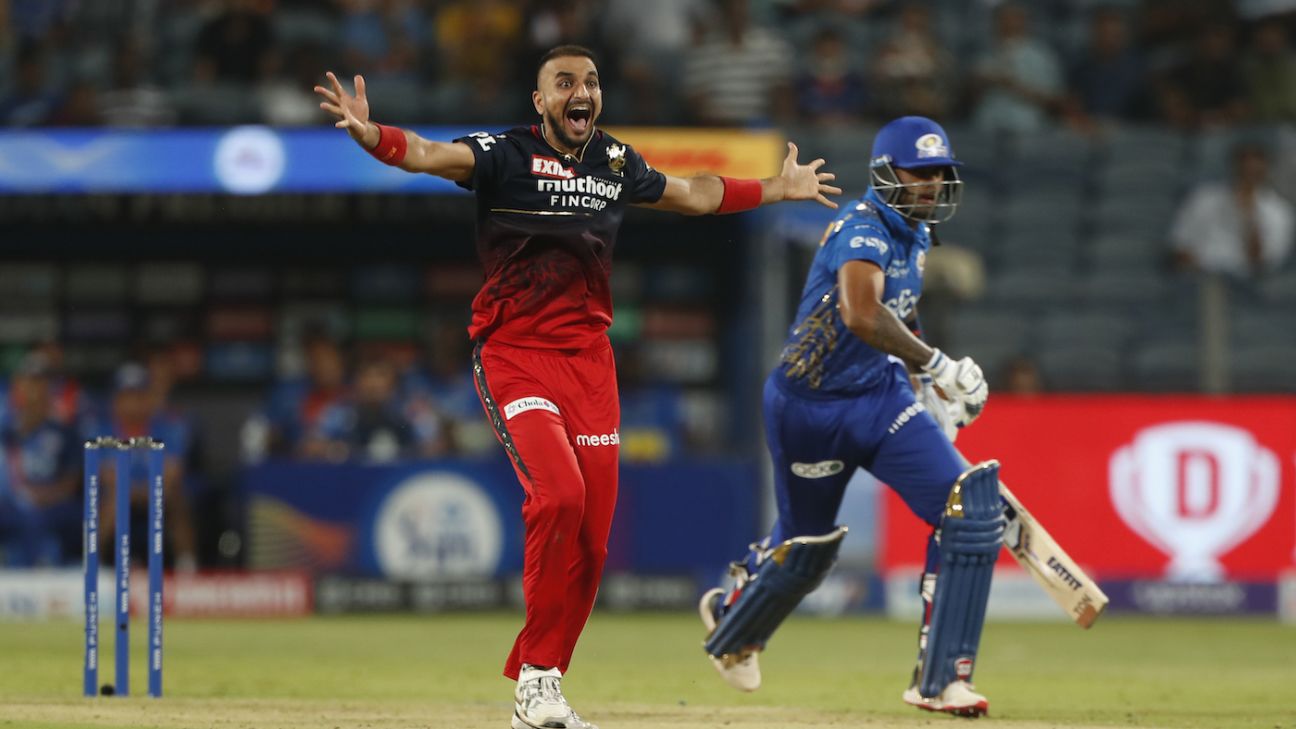“Technology can definitely be helpful in situations where you can separate black and white. But these balls are always going to be grey, especially wide-ball lines. Because you can’t really judge how much the batter has moved, whether the ball was within his reach, the angle of the delivery…,” Harshal said in a chat with ESPNcricinfo before joining the Royal Challengers camp for the IPL.
“There’s going to be a huge difference in where the ball finishes between a right-hander bowling the same [ball] a couple of inches outside the wide line and a left-hander bowling from over the stumps a couple of inches outside the wide line. When the [right-hand] batter tries to reach, it’s always going to be wider when he plays the left-hander, [and] it’s always going to be closer when he plays the right-hander.
“I don’t know how many of these factors will be taken into account when making decisions. Obviously, they can’t take a lot of these factors into account because that will consume a lot of time. In my humble opinion, this doesn’t solve the problem. You have to call it the human factor in the game and move on.”
Such reviews will be a part of the two unsuccessful reviews each team will have per innings in the IPL, just like it was in the WPL. So, while it might not always go the way of your team, the option is there for the teams, but to use it smartly.
“The other thing is you get only two reviews, right? Do you really want to use a review on a marginal call, which may or may not go in your favour, as opposed to use it in a situation where you can get the batter out,” Harshal said in response to that question. But if you have a review in hand and you are bowling at the death, a phase where fast bowlers tend to bowl wide yorkers outside the off stump?
“For sure – 100%,” Harshal said, that in such a scenario he will press his captain to use the review.
“I worry about where this is going to end up. Is everything that an umpire does likely to fall under the Decision Review System?”
Simon Taufel
“With wides, for example, and here we’re going to, potentially according to you, or according to the player or the debate, take a wide call and throw that back to the third umpire for them to judge on something that might be marginal and is still a judgement call,” Taufel had said. “Are you going to be able to over-rule as a third umpire what a leg-side wide might look like? That’s a really interesting proposition to throw to a third umpire and say: I definitely think you got that wide wrong.
“If you look at a ball that cuts across a right-hander from a left-armer [fast bowler], that cuts the wide guideline – that’s a pretty big call to over-rule. Can you clearly define for me what conclusive evidence is to overturn a wide both leg side, off side and height? And where do you then draw the line as to what a wide is? Because with wides, for example, you still got this opinion around: either could the batsman have played a shot? Has the batsman brought the ball sufficiently within reach? And you are putting them [under] a lot more stress and pressure around those definitions. Of course, if the ball has flicked the bat or the pad, and an umpire’s called a wide – yeah, that’s quite clearly an error. [But] I worry about where this is going to end up. Is everything that an umpire does likely to fall under the Decision Review System?”
Nagraj Gollapudi is news editor at ESPNcricinfo
